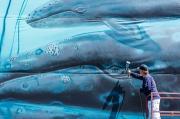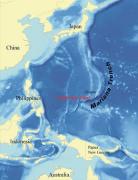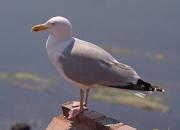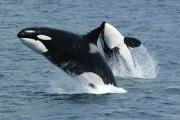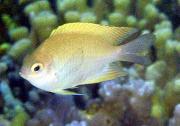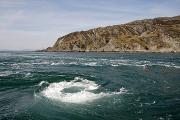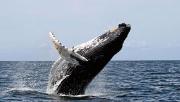Radio Program
Our regular Science and the SeaTM radio program presents marine science topics in an engaging two-minute story format. Our script writers gather ideas for the radio program from the University of Texas Marine Science Institute's researchers and from our very popular college class, Introduction to Oceanography, which we teach to hundreds of non-science majors at The University of Texas at Austin every year. Our radio programs are distributed at to commercial and public radio stations across the country.
When Robert Wyland was 14 years old, he and his mother traveled from their home in Michigan to Laguna Beach, California. From the water, Wyland saw another mom and child taking a trip: a gray whale and her calf, headed toward Mexico. That inspired a life-long interest in whales, and a decades-long public art project -- the Wyland Whaling Walls.
The waters of most of the world’s oceans are stacked like the layers of a cake. Each layer is a different temperature. The top layer is warm, the bottom layer is cold, and the layer in the middle is a transition zone -- the region with the biggest change in temperature.
That layer is known as the thermocline. It begins a few hundred feet below the surface, and can extend downward for a few thousand feet.
When sheep or cattle burp, it’s not just rude -- it’s a hazard. The average dairy cow can belch almost 400 pounds of methane per year. And methane is a powerful greenhouse gas -- 28 times more effective at trapping heat than carbon dioxide is. So sheep and cattle account for up to 20 percent of global climate change.
One way to cut that amount may be to feed them seaweed. A small amount mixed into the diet can almost completely eliminate the methane the animals produce.
In Greek mythology, Hades was the underworld -- the dark realm of the dead. And that seemed like a good description of the deepest parts of the ocean. They’re dark, and until fairly recently were thought to be lifeless. So scientists called the region below about 20,000 feet the hadal zone, after Hades.
It turns out, though, that the hadal zone is a lot livelier than expected. Biologists have discovered more than 400 species there -- fish, shellfish, worms, snails, and others. They’ve also found thriving colonies of microorganisms in the sediments.
People who picnic on the beach sometimes face a greedy pest: a seagull. Gulls grab the food around people -- and have even been known to take it right out of an eater’s hands. And some recent research says that’s no coincidence -- the gulls appear to prefer food that’s been handled by humans.
Scientists at Exeter University checked out the preferences of herring gulls on the southwestern coast of England. They offered the gulls a choice of two Ma Baker’s blueberry bars, which are wrapped in bright blue packaging.
Clear skin is worth some extra time -- even for a whale. In fact, some whales may leave their usual feeding grounds for weeks to clear up their skin.
Many whales found in cold polar waters have sickly looking skin. It’s covered by a slimy yellow layer of algae. But the skin of other whales in the same areas looks clear and healthy.
Whales that spend most of their time in polar waters sometimes head for the tropics. The leading ideas have said the trips provide access to better feeding grounds, or protection for calves.
Most fish in the oceans don’t do anything to protect their offspring. They release their eggs, then move on. So most of the eggs get eaten, and most of the fish that hatch get eaten as well.
So the few species that do protect their young have an advantage. In fact, other fish sometimes try to profit from that protection by sneaking their own eggs into the nest. So their kiddos get free babysitting from the other parents.
An albatross is a perfect sentinel for watching the oceans. It’s big, it flies fast, and it can stay at sea for months, so it covers a large area. And it can sniff out fish from miles away. The combination could make the birds good deputies for tracking down illegal fishing operations.
Such operations catch billions of dollars’ worth of fish. They sometimes fish in protected areas, take more than the limit, or use equipment that can damage the environment. And when they do so, the operators often turn off the automated radio beacons that identify them.
About twice a day, more than half a trillion gallons of water flow into and out of Passamaquoddy Bay, on the coasts of Maine and New Brunswick. The massive flow creates eddies, currents, and troughs -- including the largest whirlpool in North America.
The Old Sow has been measured at up to 250 feet wide, with an estimated depth of up to 12 feet. It’s not always a funnel-shaped hole in the surface, though. It often consists of several smaller funnels, along with walls of water, spouts, and other features.
To those who appreciate their beauty, great whales are priceless. For those who prefer cold hard facts, a recent study estimated their value: about two million dollars apiece. That comes from their benefits to the environment.
Great whales are the giants of the whale family -- a total of 13 species, including blue, humpback, sperm, and bowhead. They’re found in all the world’s oceans.

